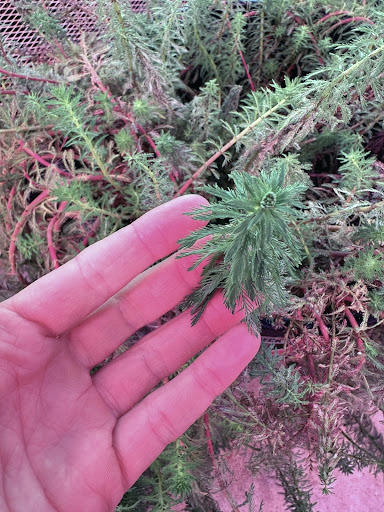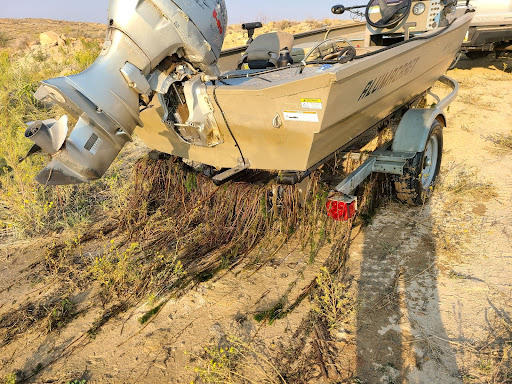Current treatment notices
Invasive plant treatment notices will be posted here.
Invasive, submerged aquatic plant species that threaten Bear Lake
Eurasian watermilfoil
Eurasian watermilfoil is a non-native, invasive plant species that severely impacts navigation, recreation, fish habitat, and water quality. Eurasian watermilfoil was first detected in Bear Lake in 2019; it was listed as a noxious weed in Utah in 2024. At Bear Lake, this species is found growing in the water around the lake in areas where light can penetrate to the bottom. This species spreads primarily through plant fragments that break off, move throughout the lake, and root in another location. In marinas, this species can grow to the surface, blocking lake access for boats, jet skis, swimmers, and other recreationalists. Eurasian watermilfoil is an important plant species to manage— Forestry, Fire and State Lands monitors and treats this species annually.
Curly-leaf pondweed
Curly-leaf pondweed is a non-native, invasive plant species that severely impacts navigation, recreation, fish habitat, and water quality. Populations of this species have been detected in Bear Lake marinas. Curly-leaf pondweed grows quickly in Bear Lake in the spring and early summer and produces turions, or winter buds, in mid-summer. These buds can sprout in the fall and overwinter, giving this plant a head start over native plant species come spring. This species also spreads through plant fragmentation. Forestry, Fire and State Lands monitors and treats this species every year.
Species not yet detected at Bear Lake— parrot feather and hydrilla
Other invasive submerged aquatic plant species that have not yet been documented in Bear Lake include hydrilla and parrot feather. Parrot feather has been documented in neighboring Cache County, UT and hydrilla has been documented in southern Idaho. Like Eurasian watermilfoil and curly-leaf pondweed, these species can have strong negative effects on our society and the environment. The best way to prevent these species from spreading into Bear Lake is to practice Clean, Drain, Dry.
How you can prevent the spread of invasive species: Clean, Drain, Dry
Invasive plants can be accidentally transported when people go fishing and boating. Cleaning off all aquatic plant fragments, seeds, animals, and mud from all watercraft and equipment will prevent unwanted hitchhikers from being introduced into another lake or area.
Learn more about how you can prevent the spread of aquatic invasive species.


How Forestry, Fire and State Lands manages invasive plants at Bear Lake
Invasive plant species threaten ecosystems, fish and wildlife habitat, recreation, agriculture, and economies. Managing the invasive plant populations that grow in and around Bear Lake is one aspect of Forestry, Fire and State Lands’ land management. Controlling invasive plant species in Bear Lake wetlands requires monitoring and adapting to the lake levels and plant populations that are present each growing season.
Lakeshore wetlands are commonly invaded by both terrestrial and wetland weeds. Bear Lake is no exception. Invasive terrestrial plant species that tolerate dry conditions (for example, Dyer’s woad) and species that thrive in wet conditions (for example, invasive Phragmites and purple loosestrife) are commonly found. Some invasive plant species even occupy the water column in shallow areas at Bear Lake. Both Eurasian watermilfoil and curly-leaf pondweed are invasive, submerged aquatic plant species that have been found growing in the marinas and in the open waters up to 30 ft deep.


Invasive plant species of focus at Bear Lake
Here are some of the plant species at Bear Lake that Forestry, Fire and State Lands manages:
- black henbane
- curly-leaf pondweed
- Dalmatian toadflax
- Dyer’s woad
- Eurasian watermilfoil
- houndstongue
- knapweed (spotted, Russian)
- purple loosestrife
- Phragmites
- Russian olive
- tamarisk
- thistles (Scotch, Canada, musk, bull)
- whitetop (hoary cress)
- weedy species (e.g., teasel, burdock, mullein)
- other state-listed noxious weeds


Contact
Rae Robinson, Sovereign Lands Restoration Coordinator, at raerobinson@utah.gov
